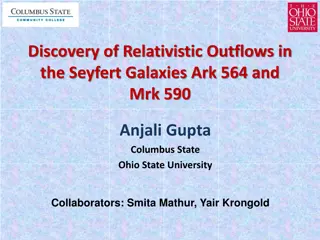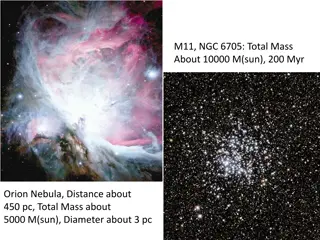Exploring High Redshift Quiescent Galaxies with NIR Studies
Introduction to the fascinating world of high redshift quiescent galaxies, focusing on the importance of studying cosmological distances, photometry probes, and the challenges of identifying NIR-dark galaxies. The research delves into SED fitting parameters and the use of ALMA for spectral energy distribution analysis. By understanding these galaxies, we gain insights into the early universe and the processes shaping modern galaxies.
Download Presentation

Please find below an Image/Link to download the presentation.
The content on the website is provided AS IS for your information and personal use only. It may not be sold, licensed, or shared on other websites without obtaining consent from the author. Download presentation by click this link. If you encounter any issues during the download, it is possible that the publisher has removed the file from their server.
E N D
Presentation Transcript
Studying High redshift Quiescent Galaxies Mouad Gnaoui, June 12th 1
Summary 1. Introduction a) The high redshift universe b) Photometry probes My research : searching for red objects a) NIR-dark Galaxies b) SED fitting and it s parameters Case in point : Quiescent Galaxies a) What are they and why are they special ? b) Candidate and characteristics 2. 3. 2
The High Redshift Universe We study objects at cosmological distances because they are a window to the past. They tell us about : The Big Bang Precursors of present-day objects 1 arcmin Galaxy formation / evolution Figure 1 : Deep observation by the James Webb Space Telescope (Abell2744 lensing field) Matter, dark matter 3
Photometry probes Figure 2 : The same region at 4.4 m and 1.15 m Photometry = measuring fluxes Different objects are bright in different regions Filter Bands to select light From X-ray to Far infrared spectrometry Shape, Spectrum and time evolution Today, we can see Galaxies ~0.1 Gyr (vs 13.8 Gyr) Hours upon hours of integration time It s the data I work with. 4 Figure 3 : Throughput of various JWST bands
brighter in longer wavelength My research : NIR-dark red Galaxies 1.15 m vs 1.50 m magnitude difference Near-infrared dark objects are invisible in optical wavelengths. They suddenly appear in farther infrared : Unnoticed for a while, leading to underestimated densities Harder to pinpoint, still under debate Many possible reasons, high redshift, degeneracy : Lyman break Dust obscuration, emission lines, growing black holes (AGN) Old stars (balmer break) fainter in longer wavelength fainter brighter in longer wavelength 1.50 m vs 2.77 m magnitude difference in longer wavelength 1.15 m 1.5 m 3.6 m 2.7 m 4.4 m How to know what we re looking at ? Figure 4 : Some candidate images and Initial selection criteria. Higher magnitude = fainter object 5
SED fitting and its parameters ALMA Dust emission SED (Spectral Energy Distribution) contains most of the JWST accessible information. Stellar light Flux density (mJy) From available photometry, derive object characteristics : Age, mass, redshift Presence and amouts of gaz, dust, black holes (spectral lines ) Star formation history : massive blue stars die fast (few Myr) while old, red stars last longer than the 800 nm universe (14 Gyr) > effect on SED shape Figure 5 : Example of an SED. Best fit model based on ~10 photometric data points We fit these parameters using a set of templates 6
Case in point: Quiescent Galaxies 1.15 m 1.5 m 3.6 m 4.4 m 2.7 m Quenched (extinguished) galaxies with only old stars left, and therefore very red. They are remnants of inaccessible steps of massive galaxy evolution and formation. Understanding the causes of quenching Put constraints on inaccessible very early star/galaxy formation Rare, still unknown density (Weak constraints) recent discoveries reveal tensions with Lambda-CDM ?) This object : Lensed by a factor of 5 => 25 less needed integration time An order of magnitude below the main sequence (between starbursts and quiescent galaxies) Figure 5 : Star formation rate against Mass and Galaxy main sequence 7 https://arxiv.org/PS_cache/astro-ph/ps/9807/9807287v1.fig2.gif























